Dunshalt Alberta 1974 and 2013
Dunshalt Alberta might appear on maps but there’s really nothing there. None the less it’s the focus of this piece. At one time two competing railways crossed paths here but that’s history now. We’re not that far from the big city of Calgary, but it feels like the middle of nowhere and that’s not a bad thing in our eyes.
A secondary highway runs close by, but there’s not a sign nor anything else to indicate Dunshalt is here or ever existed. Not that it ever really functioned as a town in the traditional sense, but more a locality. More on this in a moment.
Our subject is the railway interlocking tower that once stood here and we’ll explain everything as best we can soon enough. In simple terms this structure controlled signals that protected two intersecting railway lines thereby preventing conflicts (so one train hitting another).
Dunshalt Alberta 1974 and 2013: our subject is an obscure crossing of two railways. Lost in the prairies with Chris Doering & Connie Biggart (BIGDoer/Synd).
Be like Gary…
What’s presented here is rework of an article done a decade ago, updated and more polished, but using original photos. The latter are not great, but the location has since changed and so to keep in context they were retained. Even so, this Then & Now is a bit different due to the original photo size. A person who greatly helped with the 2013 post has since passed on and we’ll chat about them as well.
As mentioned, Dunshalt didn’t actually become a town, but instead a marked point that became important to the two railways. A grain elevator stood here in the 1920s, briefly, but the name more than anything identified the crossing.
There would have been farms, perhaps a post office and even a one room school nearby but that’s about it. Plus this railway bunkhouse: Dunshalt Bunkhouse. Outside of some easily missed artifacts one would never know there was EVER anything here today. The old roadbeds are solid evidence but they don’t paint a full picture.
There were two major railways were represented at this crossing, Canadian National and Canadian Pacific. As competitors they no doubt loathed and held each other in contempt, but here forced to cooperate.
The first set of tracks functioned as CN’s secondary main line between Calgary Alberta and Saskatoon Saskatchewan. The last through freights were in 2008 although some local continues into about 2010. The track remained in place on our visit in 2013, although unused, but it would vanish the following year.
The second line was a CPR grain branch, its Irricana Subdivision which travelled from its namesake community to the east and on to Bassano. There were connections at either end. This section got pulled up by 1976 although some track further east remained in use longer. It’s also now gone.
Larry Buchan, a dear friend who worked for the CPR kindly supplied us with pictures of the crossing at Dunshalt. He’s gone now, sadly. His images were captured in 1974 and so very late in the game. By the date of his visit, service on this section was on an as needed basis and sometimes many weeks passed between trains. Rough track and slow orders were the norm along this stretch. Speeds were leisurely as result and this made for a long, boring day on the job.
The interlocking workings of the tower were a mechanical arrangement that controlled signals at the crossing and set up in such a way that only one line at a time could ever have the “green”. So much like a traffic light but using movable semaphores instead. Trains approaching were instructed to slow down ahead of the crossing, check the status of the signal and act accordingly.
Of the two railways, the busier CNR line had priority and the signal always in their favour unless a CPR train occupied the crossing. A meeting of trains here would be a rarity, but still the rules had to be followed. CN movements only had to slow down to prepare for a stop, if necessary, and then proceed if clear. For the CPR however, things were different and the process rather labourious. They had to completely stop in each instance and go through a series of steps before proceeding.
At this point a crew member would enter the interlocking tower, climb the rickety stairs and set the appropriate levers. Once past the crossing they’d return everything to its original position and slog back to the train. Not fun, not easy and a king-sized pain during inclement weather.
The levers acted on control rods paralleling each line and these moved masted semaphore arms (one per approaching line, so four in total), a set distance away, to the appropriate aspect.
The two rail lines came through here in 1911 (CP) and 1914 (CN) respectively, but given the busier state of the latter it had priority. That track, by the way, was built by the Canadian Northern under the Alberta Midland Charter (a paper railway) and became a Canadian National property in the early 1920s. Thanks to the CNoR’s weak financial state.
The CN and CP paralleled each other for a bit before crossing at this shallow angle and heading off to different points.
By the time Larry visited Dunshalt, this part of the CPR branch was not long for the world. The line east of Irricana had only a couple grain elevators as a source of traffic and clearly this was insufficient to support rail service. Grain is both a low paying commodity and traffic sometimes spotty depending on markets.
Formerly this line went all the way through to Bassano, but in the 1960s the centre section closed east Tudor Alberta which then became the end of track in this direction. That’s a bit east of Dunshalt. The other section, between Standard and the CP mainline at Bassano, remained in service until about 2000.
At the time of our photo Larry lacked the ability to explore due to quadriplegia from an auto accident and on few occasions we acted as his legs. At his request we’d visit places he knew from the railway and send updated photos. We thought it’d be nice to show what this location looked like and he then helped us with this post. Larry left the world in 2021 and we’ll miss out little chit-chats. His railway memorabilia collection and the many time pieces especially, would have any railway buff in awe.
In Larry’s pictures you can see the tower, levers and a semaphore but these were captured on a snapshot camera. As such they’re small and not of the best quality. At the time of his visit, the building stood in rough shape, with boarded up windows and an overall feeling of neglect. Snow had entered and only the open door provided light.
On our visit in May 2013 the tower foundation could be seen and marked by a depression in the ground and some scattered bits. Blocks, broken planks and stuff like that.
Larry and the interlocking tower (from 1974, edited a bit for flow, but otherwise verbatim)…
“The four levers were painted bright red, had unlocking handles at the back, and number plates from left to right painted in white 1, 2, 3, and 4. The way the signals were set always gave the CNR the right-of-way. The instructions stated for train movements by the CPR first unlock and pull to lever No.1 toward you this was to display stop signals on the CNR.
What happened next scared the hell out of me. The open door violently closed shut and I was left in the darkness momentarily, (but) there was enough light through the cracks in the boards over the window to allow me to see again. The next instruction was to unlock and pull lever No.3 by doing this a mechanical clock mechanism behind the lever started clicking and timed out for 3 min. With this done I was able to unlock and pull lever No.2 towards me, (and) this gave our train a clear signal to proceed southward.
Our engineer whistled twice and pulled the train through the interlocking, stopping the caboose just in the clear on the south side. My next step was to restore all the signals to the way they were when I entered the tower. By doing this a steel lever coming up through the floor opened allowing me to open the door and exit. This simple but ingenious method of making sure the signals were all restored to normal. (This) was probably thought out by the signal maintainers who probably got tired of being called out to restore signals by negligent CPR brakeman who have not followed the instructions.
Of course the veteran crew had a good laugh at my expense, knowing beforehand about the towers locking mechanism, (but) it was kind of a rite of passage for railway men.”
His account really makes it easy to understand how the interlocking functioned.
The poles and communication lines in back seem little changed between the two photos. It’s not known when they were last used and they may have been out of use even when Larry’s train passed (they were for the CN line, by the way). They’re now gone and Dunshalt is even more empty than before.
A pair of hawks shadowed our positions and became quite vocal as we got close. Presumably our presence made then nervous and we were likely seen as a threat.
This same scene from 2013 would still be doable today, but there’s one caveat. With the CN tracks and line poles now gone, it just wouldn’t be the same so we didn’t consider new Now shots. Thanks for stopping by!
Know more: (new windows): Railway Interlocking and Dunshalt Alberta (not much to see).
They’re saying…
”OTBPwC&C is a brilliant concept. Thank you for enriching our lives with so many engaging and entertaining posts. Five stars all the way.” Erin Bay.
Stuff you’ll like…
Prairie Sentinels: Fort MacLeod Alberta.
Looking Down on Wayne Alberta.
Old Slocan Highway.
Midfield Park Massacre.
Something to say and no one to say it to? Go here: Contact Us!
Date of adventure: 1974 (original) and 2013 (Team BIGDoer).
Location: Dunshalt, AB.
Article references and thanks: Larry Buchan, Canadian Trackside Guides and Atlas of Alberta Railways.
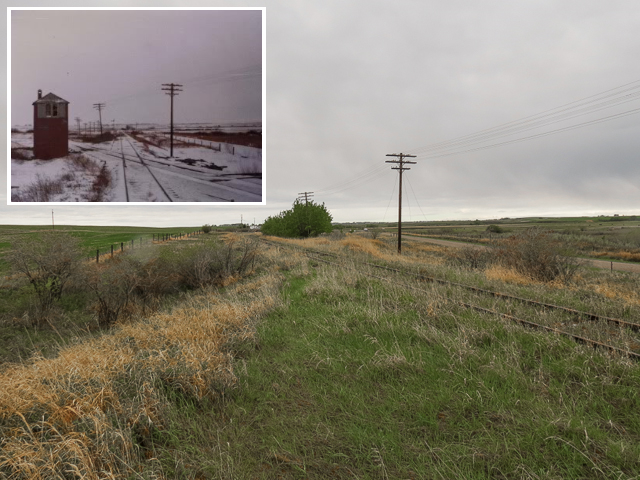
Dunshalt Alberta 1974 and 2013 – orig Larry Buchan.
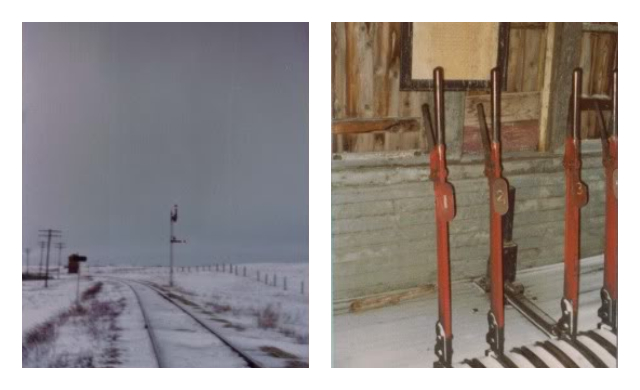
A semaphore (tower in distance) & levers in tower (Larry Buchan).
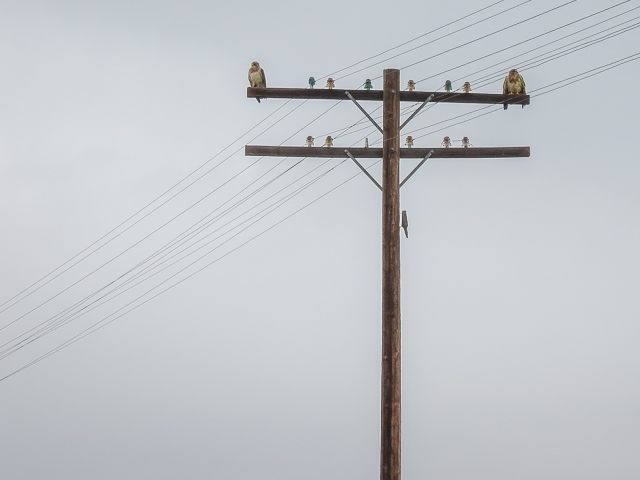
It was made clear they were not happy with us.
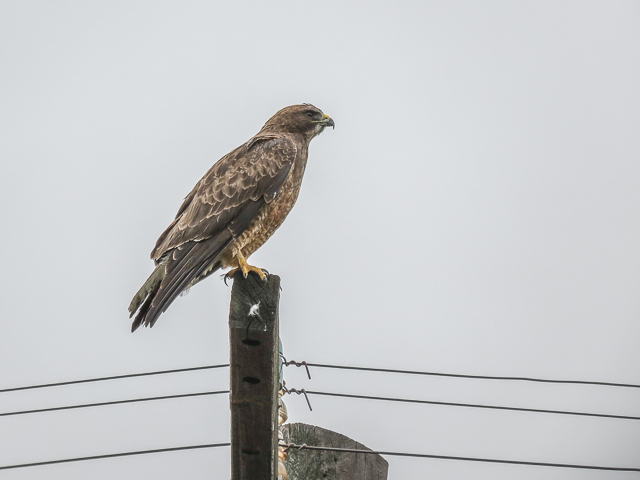
It watched us like…a hawk.
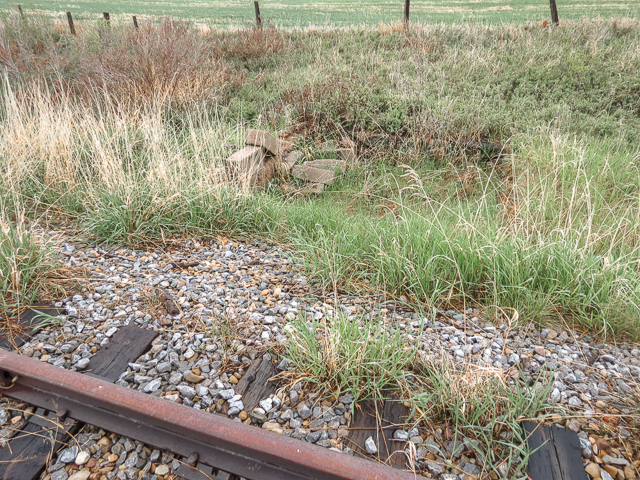
Disused track and the foundation of the interlocking tower.

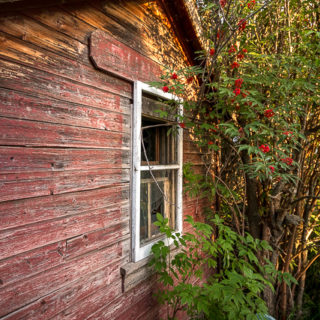
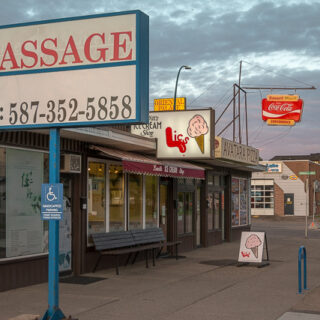
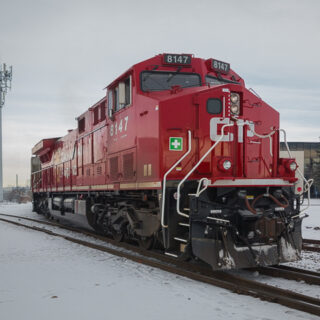
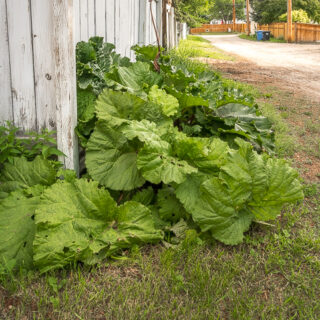
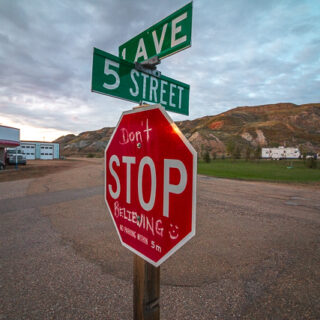
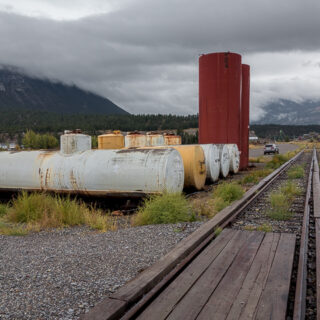
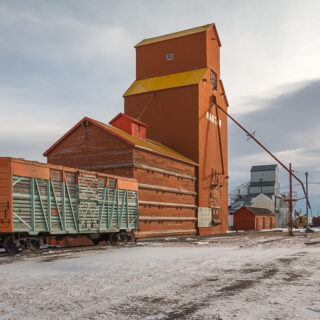
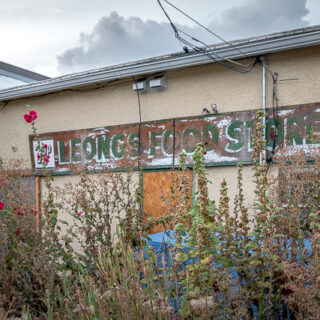
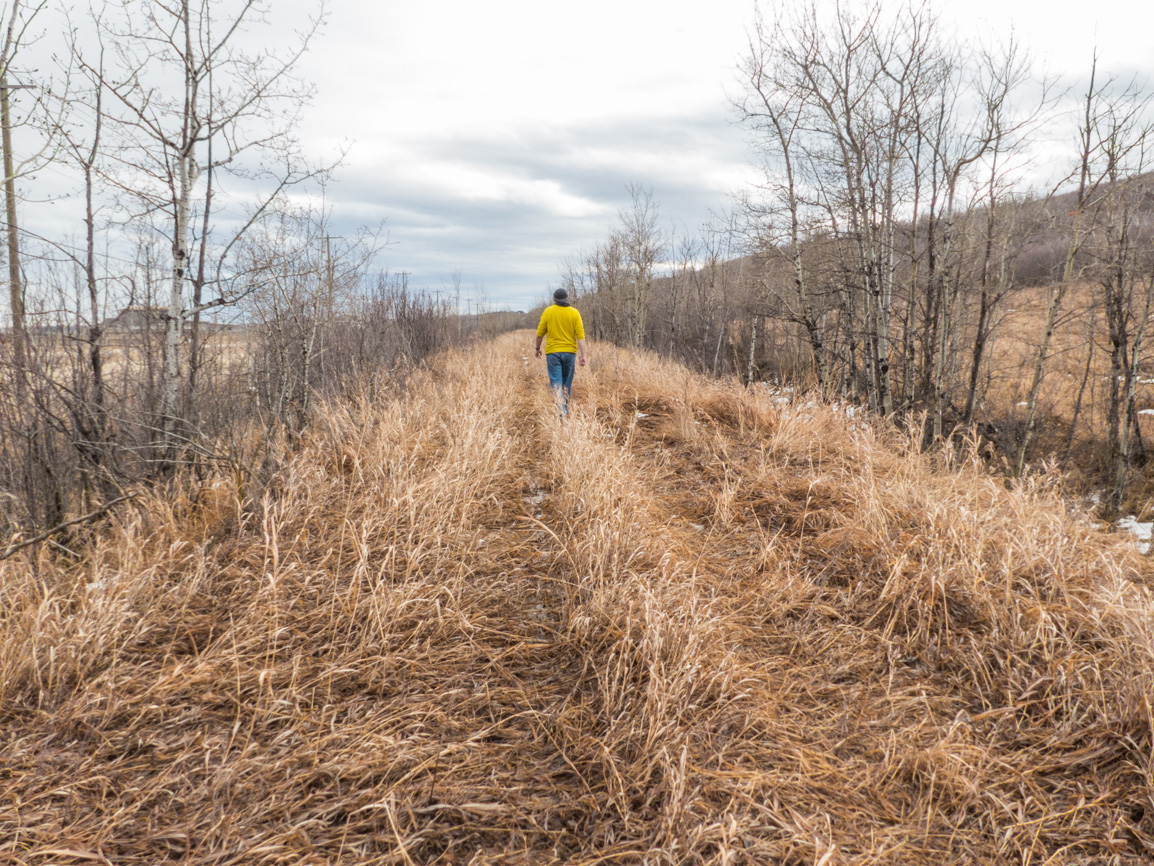
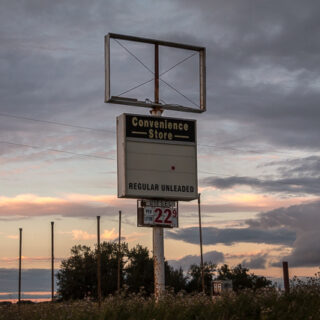
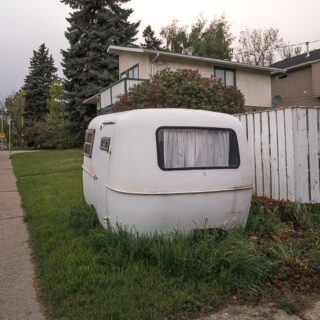
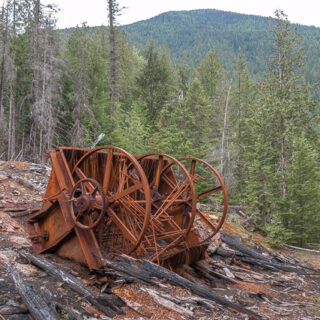







Comments are currently turned off